Published: Quiet Men featured as additional online content
I recently came across a book sent to the Photography Department at GVSU called reframing photography by Rebekah Modrak with Bill Anthes (by the Routledge Group). I think it's particularly strong in two ways...they nicely break the book into two themes, theory and practice while also providing extensive online content to complement the book. Personally I feel that allowing both theory and practice to breath on their own allows photography, at the introductory level, to categorize information in such a way that allows theory to receive the importance it demands. Often times emphasis is placed on craft, or technical details, while theory and conceptual ideas are left as secondary notions. I also feel the additional online content adds more points of discussion that can be integrated back into conversations and discussions.
And yes, it does provide an opportunity to promote my own work... but in my opinion, having a resource (other than the tumblr-photographer-blog-excitment that's going around) where anyone can "discover" a new-to-them artist centered around a published book, creates a stronger foundation for photography.
Check out the site if you can. There is a series titled In Their Own Words which allows artists to speak first hand about their work.
www.reframingphotography.com/
 Always more to come...
Always more to come...
Opening: Kyle Ford, Second Nature at 7444 Gallery
I thought I'd hit the eastcoasters with this mainly, but if your in the Adirondacks, check out the opening for Kyle Ford and Second Nature at 7444 Gallery. I've seen bits and pieces of this show along the way and can say I'm always happy to see it on the wall.
A little about the work:
I am fascinated with the way we represent the natural world by preparing it for display and visual consumption. Decided manipulations like selective preservation and engineered wilderness, act as a lens to explore ideas of mediated experience, perpetuated aesthetics, and transformative hyper-reality. This series is a catalogue of the varied ways we go about [re] contextualizing the “natural world,” and thus, redefining the way we perceive it.

 So if you're around check it out.
Opening Reception: Saturaday, May 14th from 8pm and runs though June 4th
Have a good weekend...
So if you're around check it out.
Opening Reception: Saturaday, May 14th from 8pm and runs though June 4th
Have a good weekend...
Artist: Rafael Soldi [q&a]
Once again I am honored to feature the work of another artist on this blog. Rafael Soldi has been kind enough to answer questions and discuss his work. I was able to sit down first hand and talk about his process but now I have the opportunity to bring some of those original thoughts, along with new ideas, to a wider audience. His work is deeply moving and the discussion brings to light context, origination and direction. Please read on and visit his website to see more work by him. The Artist Statement for: SENTIMENT (In progress) For over three years my work has focused on my cultural transition and its implications as I come to terms with my homosexuality. I drew attention to my childhood, my family and the environments that surround me. Eventually I turned my camera towards my now defunct relationship, which became pivotal in defining my present-day identity. Now I turn my camera towards myself, as I fight to reconstruct a life without the very thing that I thought defined me. Sentiment emerges from my longing to photograph feelings that are sui generis, manifested uniquely through my person. These images represent my struggle to surface from darkness, panic and hopelessness. Just as I once escaped my motherland to pursue a foreign one that welcomed me wholly, I now find myself escaping something foreign which has taken residence in my body and have turned the camera on it in hopes of a full exorcism. **** [q&a]
I would like to focus on the series Sentiment because this is the work we spoke about but please do not feel constrained to only talking about that.
John Szarkowski once referred to narrative photography in the personal context as, “a way of living” do you feel your photography has evolved into this practice?
Absolutely, what a great reference. As my work develops I have become less concerned with bringing predetermined meaning to my images but rather allow for the conceptual integrity of a project to be born from within itself. At some point with personal narrative the work turns so personal that it becomes a visual reflection of life itself, to the point where the process becomes instinctual and henceforth a way of living. I think Szarkowski is referring to the power of personal photographic narrative to channel life, its ability to reference our subconscious and unfold it before us. Sometimes it is even a bit frightening when I realize that my photographs know me better than I know myself, as I worked through my breakup there were things I was perfectly comfortable communicating with an image but incapable of expressing with words. For me it is performance in a way, the photograph acting as a tool that fetishizes life –you can see this in Tina Barney’s work, David Hilliard or even Doug DuBois. Seeing their personal lives unfold right there on the pages of their books is quite bizarre… you can see the way each has turned their image-making into a way of living. But back to the performative aspect, I don’t really document my life like Barney or DuBois do; I interpret it and symbolize it and sum it up into gestures that, even though sometimes literal renditions of one specific moment, stand for a larger emotional metaphor. In this respect I’ve been more aware of works by Elinor Caruci and John Arsenault.
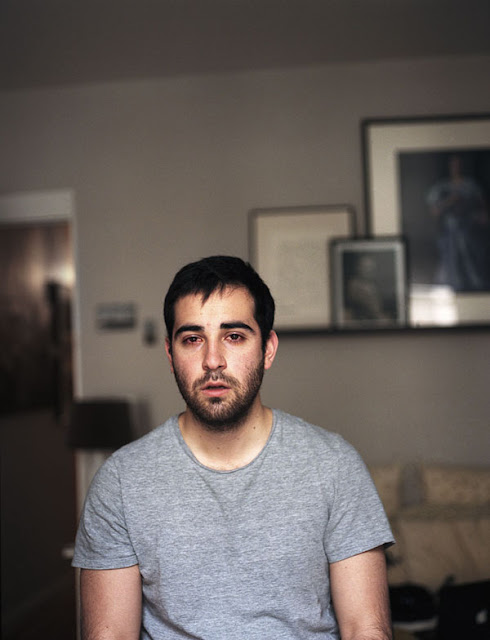 Your photographic work manifests itself in deeply personal narratives; does this translate into your understanding of time, as a reflective awareness, anticipation of a forthcoming future or something else entirely?
Your photographic work manifests itself in deeply personal narratives; does this translate into your understanding of time, as a reflective awareness, anticipation of a forthcoming future or something else entirely?
There comes a point in deeply personal work in which the line blurs and you find yourself living in your work, channeling reality through it, instead of channeling your work through reality. When your personal life directly informs your work it’s hard not to think about time and the future, knowing that those factors will be active facilitators of your professional practice and creative process. For almost two years now my work has been very dark, I have used photography to explore and understand feelings unlike anything I’ve ever felt: loneliness, pain, regret, fear and loss. My project Sentiment became an exorcism of sorts, a cry for help and a violent discharge of horrifying emotions. With time I learned to live this way and I produced work that I considered powerful and important, so the idea of time became a very scary thing.
You mentioned reflective awareness and anticipation of the future. As time passed by I have slowly healed and I’ve shifted my focus towards my career, a new life in a new city and new friendships. All of the sudden life is looking up and you’d think this would be a great thing, but it’s terrifying. I ask myself, what am I supposed to make work about now? Pictures of a very happy life sound kind of lame. I’ve discovered that I have spent so much time living IN my work that now I’m afraid to escape it. So, yes, these personal narratives do affect my understanding of time and my grasp of a forthcoming future. This work contains universal struggles and emotions, do these ideas resonate with you at the time of creation or is considered on a different level?
It depends, each photograph has been made in a very specific context, in very different places both physically and emotionally. Some images were produced with a specific concept in mind, while some were a gut reaction to an abstract feeling. Some were made with one intention and the results surprised me and lead me to something else entirely. For example, the image titled “Panic” is quite literal, it was taken promptly after a powerful panic attack; with the exception of moving some distracting things out of the frame, the space and myself looked the same and I was still in distress when this was taken. In the case of “You’re Here, I’m There,” I went in knowing the title before I even took the image. The image I had in mind was completely different, it featured me nude wrapped in this large map. As I kept shooting things changed and I felt more and more angry, so I pointed my camera down and attacked the map with my hands while pushing the cable release with my knees (I almost always shoot alone). It was the last frame in the roll and the only image I took of this composition and it just worked, I never expected anger to become such an important part of the image. In the case of “Bajo Tu Manto,” it was an instinctual response to an urge to make that image… I’m still figuring out what it means.

 Your images embody a particular color palette, how do you anticipate or consider the use of color when approaching this work?
Your images embody a particular color palette, how do you anticipate or consider the use of color when approaching this work?
Yes, I always try to stick to a specific palette. I don’t think about it much, I just respond to it aesthetically. I don’t like saturation or very intense colors; they are distracting and take away from the content of the work. There is a place for everything, I guess, sometimes I feel extreme color is used as a crutch to compensate for boring content. I also always use the same low-contrast film and only shoot with daylight which probably contributes to the aesthetic of my work. The series Sentiment has a very poetic sequencing between object and image, how are you concluding what the story should embrace? Is there a place where you would like to see it go?
The addition of objects to the series is very recent and I am still unsure about its exact purpose. For now I am calling it “evidence,” as these are things that are surfacing in my life unexpectedly, as evidence of the relationship that once existed. In the series I also photograph objects, which mostly hold symbolic meaning: a pocket watch that references the time that has passed, that which is to come and that which presently heals. Or the image titled “21 Reasons Why I Love You”, which features 21 balloons my ex-boyfriend gifted me on my 21st birthday, each representing a reason why he loved me. Now I look at this image and the balloons no longer represent unconditional love, they rather resemble a dark cloud, an omen of what’s to come and the last two years of my life.
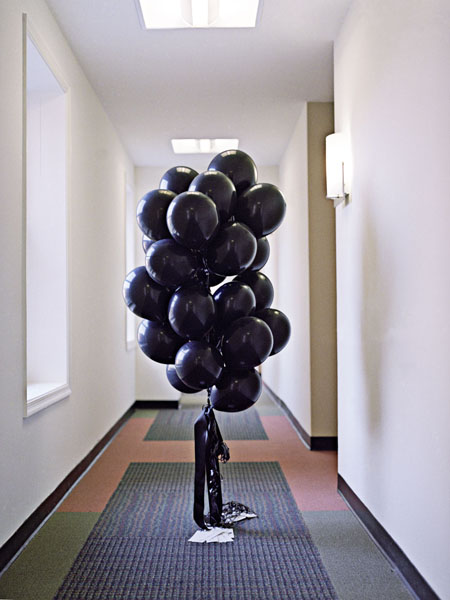 Where do you hope to take this work or where can the reader see it now?
Where do you hope to take this work or where can the reader see it now?
I would like to start considering the installation of this work in a gallery setting and looking at the possibilities that exist with the physicality of the work. I’m referring more specifically to the way in which the images can be hung such that it evokes the right type of reaction from a viewer. Playing with scale and the arrangement of the work on the wall can give a certain visual poetic three-dimensionality to it and add power to the images. But again, I’m going to have to try this, because for all I know it could turn out to be a disaster. I have been very actively applying for grants and fellowships to underwrite the costs of production for an exhibition before I start pitching the work to galleries. I have a studio visit/open studio planned for lat May here in Seattle, and I will be posting more details on my blog and website. I am also in the final stages of launching a new website, so keep an eye on that. I welcome any artists, curators and collectors to come by for a studio visit if you are in the Seattle area and share some work or start a dialogue.
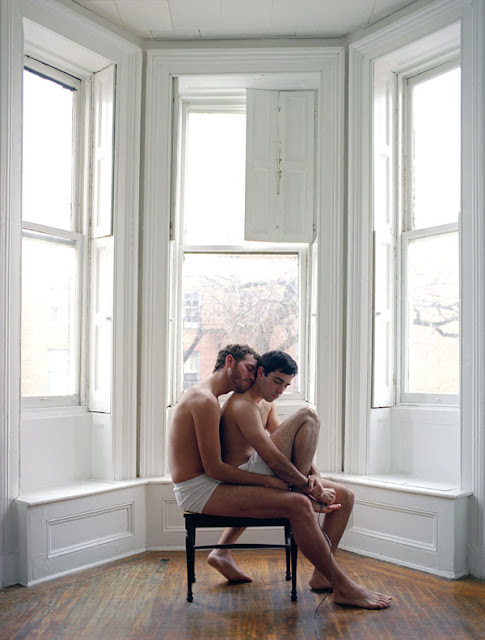
"Closer to Home" by The Photo Installation class at GVSU
Tonight is the opening reception for the GVSU Photo instalation class. More Info from the invitation:

There are more slaves in the world today than at any other time in human history. Sex trafficking is a huge part of this trade. The issue of sex trafficking has become more exposed to the public in the last decade but many in the U.S. still view it as a problem in far off countries.
There are estimated to be 325,000 CHILDREN trafficked for sex in the United States alone. The average age of entry into the commercial sex industry in the U.S. is between 12 to 14 years old. -The Polaris Project
The photo installation class at GVSU is addressing the issues of sex trafficking and how it is a topic that is closer to home than you think.
Wednesday, April 27 · 5:00pm - 9:00pm
240 Front St. Grand Rapids, MI If your around the downtown area stop by and say hello. More to come...
Inspiration: The Parking Ticket Emotional Reclamation Project
I'm always a huge fan of art that tries to inspire positive ideas out into the world. The Parking Ticket Emotional Reclamation Project seems to do just that. It's a guerilla project that tries to combat the emotional damage done by a parking ticket. The pterproject movement is happening in none other than art-hub NYC but none-the-less it's a pretty neat idea (assuming that the violator was a measly 5min walk from their return as opposed to say, blocking an ambulance, which they'd probably just get towed for that...but you get the idea). Hit the image for the link. And there's a video...
(you might want to turn your volume down before this one, some rather jarring music a few seconds in)
And there's a video...
(you might want to turn your volume down before this one, some rather jarring music a few seconds in)
The Parking Ticket Emotional Reclamation Project from pterp on Vimeo.
Anyway, gotta any cool inspiring art ideas? There's going to be more inspiring work on the blog this week when I have the pleasure of hosting a discussion with Rafael Soldi about his work. More to come...
Distinguished Academic Lecturer: Ken Burns, GVSU 50th Anniversary
This should be really interesting. If anyone's in the GR area tomorrow I highly recommend you check it out.
 When
Thursday, April 21, 2011
7:00 PM
Where
Second Floor, Eberhard Center, GVSU Pew Grand Rapids Campus
When
Thursday, April 21, 2011
7:00 PM
Where
Second Floor, Eberhard Center, GVSU Pew Grand Rapids Campus
Photographer: Diane Fox [q&a]
What a great honor to start off the week with a featured artist. Again, I had the pleasure of meeting Diane and discussing her work a bit in person. Furthermore, she was also kind enough to answer a few of my questions while allowing me to post the responses. Be sure to stop by her website to see the rest of the images from the series UnNATURAL History. It's well worth a look. And again, many thanks to Diane for taking the time to share her work and thoughts. The Artist Statement for UnNATURAL History: I am interested in the ways we objectify nature, both positively and negatively. The dancing, happy pigs used as icons for BBQ joints and meatpacking plants have always struck me as deeply ironic. Plastic animals take us for rides in theme parks and animated versions sell us products. Nature comes to us, viewed through glass windows at the zoo, natural history museum or framed on television. Likewise, the photograph objectifies the world as seen through the lens of the camera.
We visit natural history museums for a glimpse of our natural world, a world we often do not experience first hand. We view animals from far off places and times at a safe distance. Dioramas (and photographs) create a framed moment of nature frozen in time. The more closely they resemble an actual space and event, the more closely the taxidermied animals appear to breath life, the deeper our sense of wonder and connection.
It is this dichotomy between the real and the unreal, the version of life portrayed and the actuality of death, the inherent beauty of the animals within their fabricated environment and the understanding of its invention, that finds me both attracted and repelled.
**** [q&a] American traditions are often rooted in iconic images and advertising which manipulate nature by their own inherent qualities, how do you feel dioramas build upon or offer a new perspective into our relationship with nature?
When Carl Akeley created the first total habitat diorama in 1889 his purpose was to bring the wonders of nature to a public that, for the most part, could not experience it first hand. Natural history specimens before this time had generally been displayed on shelves within glass cases and without context.
Akeley not only provided an environment for his taxidermy based on casts, paintings and measurements taken in the field, but also created the method of taxidermy used today. Before Akeley animal skins were simply stuffed with wood or straw shavings. In Akeley’s method a clay model is molded onto the bones of the animal and sculpted in great detail before being cast and covered with skin. This approach made the animals appear even more “alive.”
Ironically, even though Akeley and his group killed thousands of animals to create his dioramas, he considered himself a conservationist, as did Theodor Roosevelt, an avid hunter who helped add to both the American Museum’s and Smithsonian Museum’s collections. Though animals are known to camouflage themselves within their natural environments, Roosevelt was among those who pushed for the animals to be prominent and unhidden within their displays. Thus many layers of the manipulation of nature were present from the diorama’s inception. As a viewer I respond to reflections and physical elements in the museum included in the frame as they seemingly bridge the elusion between reality and imagination, how do you come to terms with these unique visual cues?
The first photograph I took was of a diorama of an underwater pond in the Exhibit Museum in Ann Arbor, Michigan. I took the image thinking that it would reveal the kitschy construction before me. To my eyes, the pond looked utterly false. The surface representing the water was sagging and all the contents, from frog to fish to plants, appeared plastic. The light above the surface of the water was glaring. I was utterly surprised by the resulting photograph, which showed a magical, softly lit, underwater space. I had photographed for many years by that point and thought I knew exactly what to expect when my film was developed. The fact that I could be surprised by the resulting image completely fascinated me.
 The third museum in which I photographed was the American Museum in New York (one of Akeley’s). At that point I was examining the relationships between the two-dimensional and three-dimensional elements within the frame and how, when photographed, they flattened into an illusionistic space that in many ways seemed more real than the dioramas themselves.
The third museum in which I photographed was the American Museum in New York (one of Akeley’s). At that point I was examining the relationships between the two-dimensional and three-dimensional elements within the frame and how, when photographed, they flattened into an illusionistic space that in many ways seemed more real than the dioramas themselves.
It was during this visit that I turned the corner and saw a chimpanzee and human skeleton reflected on the glass of a case containing taxidermied chimps. The reflection extended the meaning of the image and asked even more of the viewer. It was with this discovery that I understood how my work could push beyond a simple reframing of the case and place emphasis on visual cues that address the separation of nature and viewer.
 One of my favorite images using reflection was shot recently in Bratislava, Slovakia. The photograph shows a family of deer in a forest; the doe and fawn eating grass while the buck stands at attention listening and looking out for danger. To the left, reflected on the case, a wolf approaches the group. It is interesting to consider whether this relationship between the displays was conceived by the exhibition designer or does my photograph reveal levels of meaning and associations that may have been accidental or subconscious.
One of my favorite images using reflection was shot recently in Bratislava, Slovakia. The photograph shows a family of deer in a forest; the doe and fawn eating grass while the buck stands at attention listening and looking out for danger. To the left, reflected on the case, a wolf approaches the group. It is interesting to consider whether this relationship between the displays was conceived by the exhibition designer or does my photograph reveal levels of meaning and associations that may have been accidental or subconscious.
 When photographing do you have preconceived visions you would like to search out?
When photographing do you have preconceived visions you would like to search out?
Working within the same photographic series, UnNatural History, for thirteen years has given me the opportunity to continually reexamine my subject and has lead me to many discoveries through the lens. Two of these have been discussed above; the blending of two and three-dimensional space and the use of reflection to extend meaning. I am also interested in playing with the merging of the painted background with the taxidermided animal; working with point of view to position the viewer face to face or within the path of the animal; and adding glimpses of elements which point to the diorama’s construction (the ceiling, lights, edges, etc.) to signal its artificiality.
I have recently begun working in color, something I have never really done as an artist. Unlike the black and white images, the color often points to the falseness of the scene. The decision to work in color came about in part because I switched from using black and white film to shooting with a digital camera. In doing so, I suddenly had a choice as to whether to leave the image in color or change it to black and white. The other aspect of the decision was that there are images that do not work as well in black and white because of the subject, the lack of contrast between the elements of the display and/or the beauty of the color within the scene. A couple of these considerations inform the first image I decided to leave in color, “Wrapped, Milwaukee Public Museum, Milwaukee, Wisconsin.” This shows a portion of the Africa area of the Public Museum in which a large display was leaking and several of the animals were covered in plastic for protection. Much of the poetry and edginess of the image was lost when changed into black and white.
 American culture responds to the presented image and/or performance, yet your work goes beyond the American experience and looks at those museums abroad. Has this led to any interesting conclusions?
American culture responds to the presented image and/or performance, yet your work goes beyond the American experience and looks at those museums abroad. Has this led to any interesting conclusions?
I have been fortunate to have had several opportunities to photograph in different countries: Rome and Florence, Italy; Bremen, Germany; Vienna, Austria: Bratislava, Slovakia; Toronto, Canada; and London and Bristol, England. Whenever I travel for work or play, in the US or abroad, I seek out natural history museums in which to photograph.
In many of the museums overseas the collections are quite old with the taxidermy arranged on shelves in glass cases and not within dioramas. This is not true for all museums, however. One of my most exciting shoots I have experienced was in the Übersee Museum Bremen in Bremen, Germany, which has beautifully composed dioramas. When there, I was so immersed in shooting that I did not notice that there was a fire and everyone had been asked over the public announce system to leave the building. Fortunately the fire was modest and contained to the museum kitchen, but I was escorted out by three visibly upset firemen.
One of the main differences I see in the museums overseas is the beauty and age of the architecture. In several images the architecture becomes a strong element within the image. This is especially true in Fish, Naturhistorisches Museum, Vienna, Austria in which the richly decorated ceiling occupies half of the image.
 Where do you hope to take this work or where can the reader see it now?
Where do you hope to take this work or where can the reader see it now?
I am very interested in getting this body of work into more solo and two-person exhibits. At this point I have thirty black and white pieces and thirty in color that are crated and ready to ship. The work just came down from the Haydon Art Center in Lincoln, Nebraska and I have several proposals out at this moment.
The best place to view the work at present is my website is www.dianefoxphotography.com
Weekend Post, Upcoming: Photographer, Diane Fox
As the title suggests I have the honor of featuring the work of Diane Fox and her series an UnNATURAL History. Look for it next week as we discuss her series and some of the larger concepts behind the work. Until then have a wonderful weekend.
Cheers.
Follow Up: SPE National, 2011, Atlanta
Another year, another national SPE conference come and gone. And while this is an incredibly late blog post I want to start out by saying thank you to all SPE employees and volunteers working hard, dedicating time, upfront and behind-the-scenes to make it all come together. A tip of the hat to all of you. The odd thing about this conference, and one or two in the past, is how little photographing I actually do. I used to photography quite a bit and I always go with the intent to photograph as much as I possibly can, but when the event actually happens, I fail in almost every way to break out the camera. Clearly I'm no photojournalist. Or maybe I am but simply should never get the assignments in which I would rather participate than photograph. What-ever-the-case, I believe at SPE I try to become a man of the people. With this conference, as with so many in the past, I had the pleasure to meet tons of artists creating fantastic work. I even have the honor to feature some of their work on this blog in the coming weeks as part of my ongoing artist series.
The whole conference was a fantastic opportunity to see some of the wonderful things happening in art + photography. Until I get the discussions together, I wanted to post the cards from those I directly met. To all of you: it was fantastic to talk with you and see what you were working on.
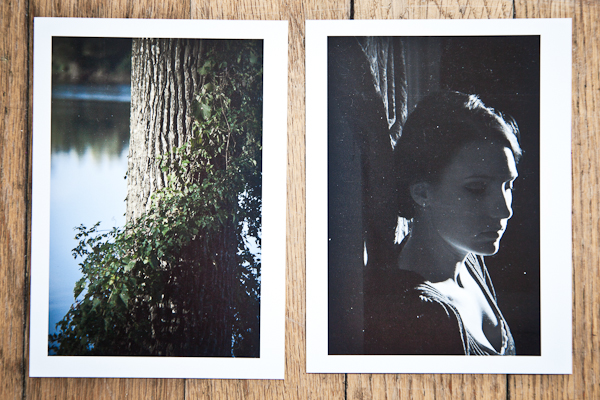
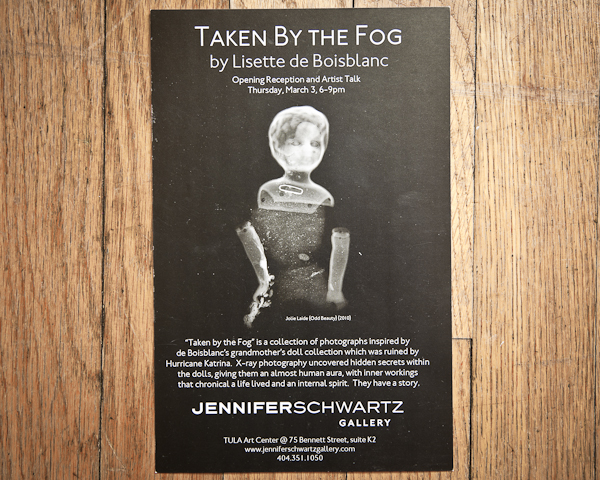
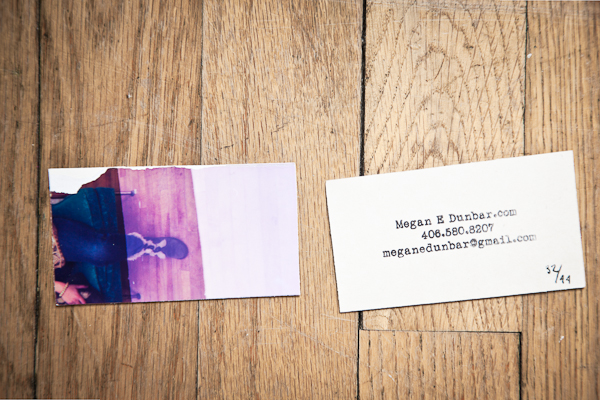




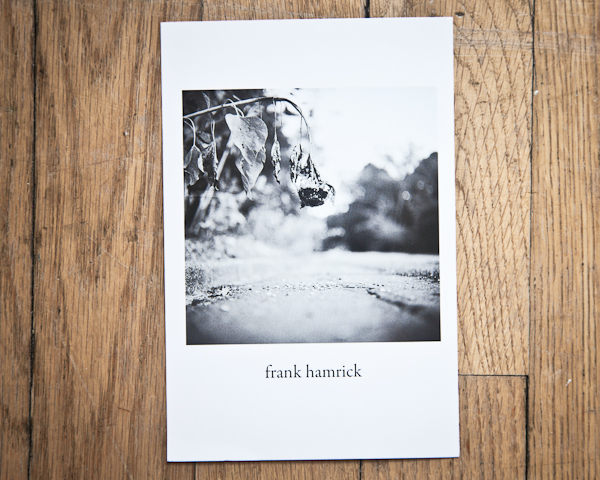

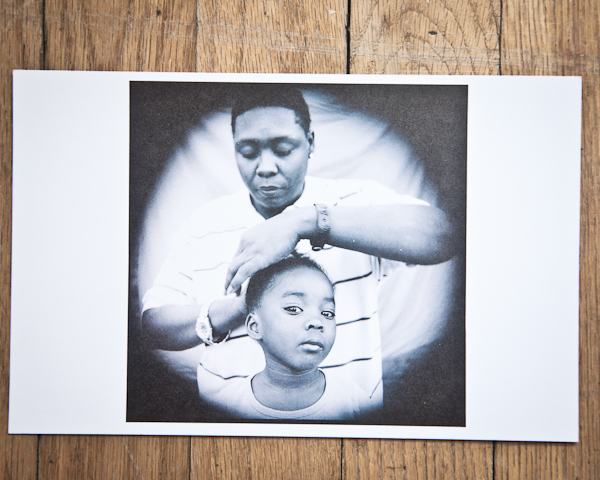
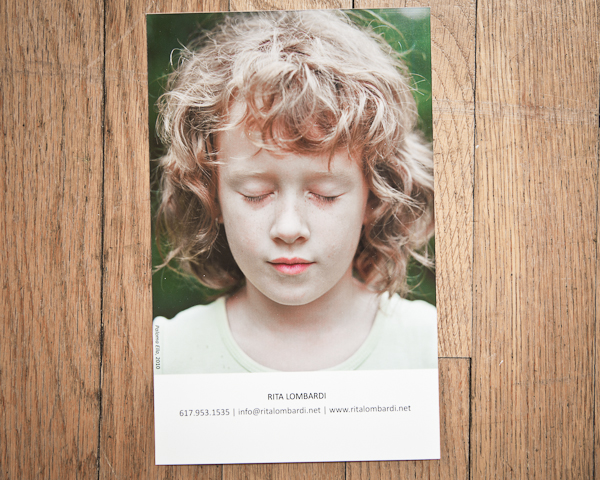
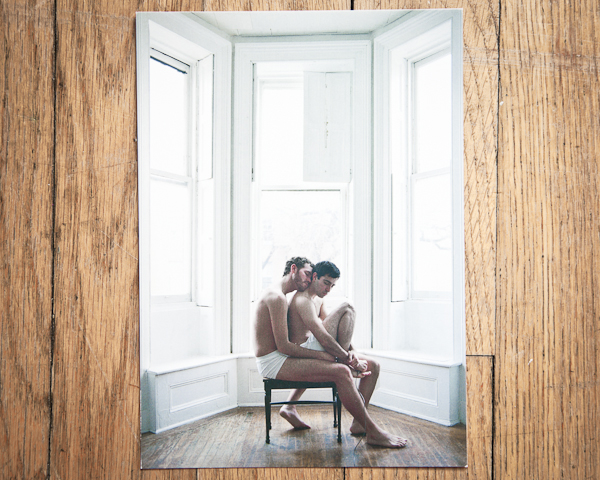
On one last note, some quick shout outs. Christin Boggs - awesome talk, really well done, maybe I'll speak at SPE someday : ) but until then, I totally enjoyed hanging out + talking art. Andy Super - Sorry man we never got that chance to sit down and have a chat. Where does the time go?? Drop me a line sometime. William Knipscher - your coffee stain print haunts my morning with memories of beauty, I thought the simplicity of that was great. It was wonderful to see your work. Lisette DeBoisblanc - congratulations on the solo show! Again, that's great! And to all the others, don't worry, I love you too : ) Look for new artists and some great conversations to develop on the website in the near future. Cheers.
Follow Up: Multimedia III, Grand Valley State University
I wanted to add some shots from the fantastic show that was Multimedia III, Alumni Invitational. It was a truly wonderful show with lots of great work from all mediums. It was an honor to participate.
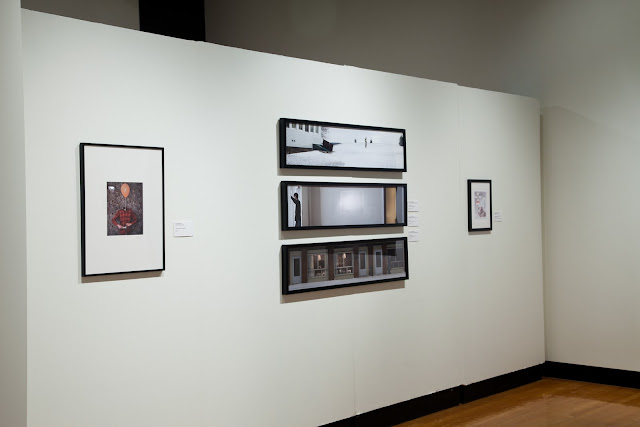
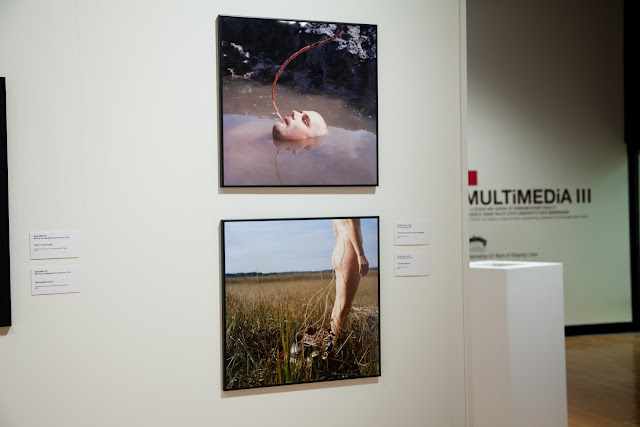

 Great show. More to come...
Great show. More to come...
Stay tuned for some new work to pop up on the main site too...
Cheers.
Follow Up: Wood Street Galleries, Pittsburgh, PA
While I was in Pittsburgh I mentioned I stopped in the Wood Street Galleries and was totally blown away by the exhibit "WHITE LIGHT/BLACK LIGHT." Well, while Patrick and I were there, at the same time there also happened to be a photographer there to capture this totally awesome photo:
 Really cool image. It really doesn't do it justice compaired to being in the room but it's a good start. It's a MUST see if your in the city. And one more for fun...
Really cool image. It really doesn't do it justice compaired to being in the room but it's a good start. It's a MUST see if your in the city. And one more for fun...
 More to come...
More to come...
Artist: Emily Mansfield
I've known Emily for awhile now and she's even one of the contributing factors to helping me get some of my own work done. When I had a rather unfortunate bike accident and needed to load a 44in roll of paper onto a printer she offered a hand. Tricky indeed. Anyway, she has moved to Maine and got involved with the legendary crew at the Maine Media Workshops.
In the process of working within that program she has been creating on a new body of black and white work. She's been awesome enough to share a preview of what she's been up to. If you have two seconds stop by her site as well. I really like B&W and her new work is no exception. I'm excited to see where it goes.



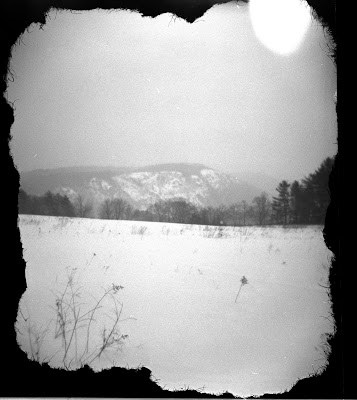
 Really great stuff. Excited to see more.
On another note entirely... our freedoms here are taken largely for granted, yet put in acute perspective we watch those in Tunisia and Egypt. Everyday I try to be mindful of our freedoms and thankful for our life here. I have tremendous empathy for those fighting for freedoms. I hope that peace forms the foundation of the future and change for a positive future drives the course.
More to come..
Really great stuff. Excited to see more.
On another note entirely... our freedoms here are taken largely for granted, yet put in acute perspective we watch those in Tunisia and Egypt. Everyday I try to be mindful of our freedoms and thankful for our life here. I have tremendous empathy for those fighting for freedoms. I hope that peace forms the foundation of the future and change for a positive future drives the course.
More to come..
Follow Up: Speaking Light, Nate Abramowski
This is a very breif follow up to the Speaking Light series in Pittsburgh at Point Park University. It was a wonderful talk and I have to thank Point Park University, Patrick Millard and Christopher Rolinson for making it happen.
It was great to meet new people and see the facilities at Point Park. I didn't get a chance to see as much student work due to some travel complications, but from what I saw on the walls it appears that good things are afoot. Two quick Images from the show...

 Patrick Millard & Nate Abramowski photo by Christopher Rolinson
Also, if you're in the area you have to stop by wood street galleries for an amazing show called "WHITE LIGHT/BLACK LIGHT". Fantastic work. From the gallery:
:
WHITE LIGHT/BLACK LIGHT
Patrick Millard & Nate Abramowski photo by Christopher Rolinson
Also, if you're in the area you have to stop by wood street galleries for an amazing show called "WHITE LIGHT/BLACK LIGHT". Fantastic work. From the gallery:
:
WHITE LIGHT/BLACK LIGHT
January 28 April 3, 2011 Gallery crawl: January 28, 5:30-9p
Mesmerizing, contemplative, hypnotic and dramatic in its beauty is one way to describe the Icelandic landscape.
It is not coincidental then that these descriptors also apply to the sound-modulated light works by Finnbogi Petursson in the exhibition "White Light-Black Light". As the artist has stated, "I am always trying to capture phenomena such as sound, water, fire, shadow and light and channel them along new grooves, turn them into something other than what they are. These are phenomena that you feel and think about, but never see."
Jan Tichy's multimedia installations also draw upon the ephemeral. The Czech-Israeli artist, now living in Chicago, refers to natural phenomena presented within a digital photographic domain. In Tichy's "Tubes" (2006), a TV monitor 'plays' the white noise of itself while projecting onto a landscape of tubes within a closed environment, yielding an installation that is at once transitory and concrete. With shadow and light assuming equal roles, this sensory environment is hauntingly beautiful and ominous in its measured play.

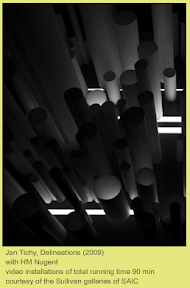 Absolutely beautiful full body experiences. I was fortunate enough to experience the work. Go if you can. It's a must. I cannot say enough good things about it.
And that's about it. A very brief wrap up indeed. And just a heads up for next week, new work by artist Emily Mansfield working out of Main and getting back in touch with a little classical processing. Good work so stay tuned.
Have a good weekend.
Absolutely beautiful full body experiences. I was fortunate enough to experience the work. Go if you can. It's a must. I cannot say enough good things about it.
And that's about it. A very brief wrap up indeed. And just a heads up for next week, new work by artist Emily Mansfield working out of Main and getting back in touch with a little classical processing. Good work so stay tuned.
Have a good weekend.
Quiet Men Lecture: Speaking Light, Point Park University
If your around the Pittsburgh area tomorrow make sure you stop by and say hi. I'll be presenting at Point Park University talking about the series "Quiet Men" and a few other things.
I'm honored and excited to talk about my work and see the work of others. A big thanks has to go to Patrick Millard and Point Park University for making this come together.
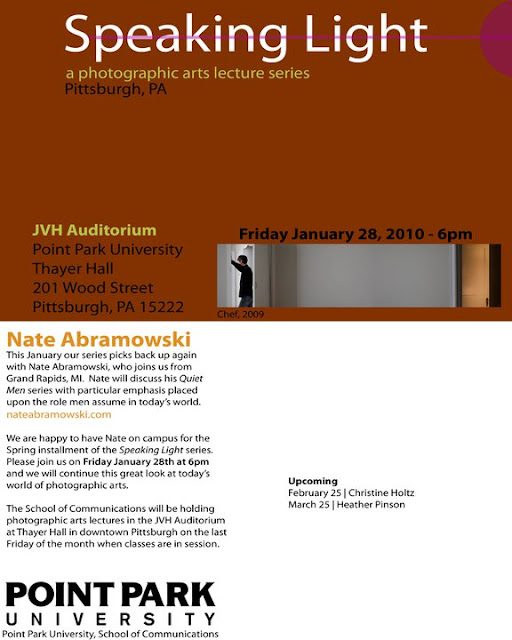
Opening: Selected Work at The Crooked Tree Arts Center
If you're around the Petoskey area in Michigan this weekend had over to the Crooked Tree Arts Center for the reception for their 30th Annual Juried Photography Exhibit. An image from my personal work was selected. From the release:
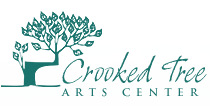 30th Annual Juried Photography Exhibit
30th Annual Juried Photography Exhibit
January 22nd - April 15th, 2011 The opening will be January 22 from 4-6 pm.
The Crooked Tree Arts Center is making preparations for its 30th Annual Juried Photography Exhibition to be held in the West Gallery from January 22 through April 15, 2011. “This will be the second exhibition that all works must be registered online. We had to make a decision to reestablish the entry procedures for many reasons,” explains Gail DeMeyere, Visual Arts/Education Director at CTAC. The juror for the photography exhibition is Charlevoix resident and noted photographer G. Randall Goss. The opening will be January 22 from 4-6 pm. Neat stuff. I'm excited and very honored to be featured in another show. I'll be around on Saturday so if you see me say hey. Cheers.
Inspiration: Nuit Blanche by Spy Films
This leaves me speechless...
Nuit Blanche from Spy Films on Vimeo.
Opening this weekend! Post tomorrow!
Opening: Quiet Men at Multimedia III: Alumni Invitational
Check it out...select images from the larger body of work, Quiet Men, is going to be shown in Grand Valley State Univserity's Multimedia series. The Alumni Invitational hosts quiet a long list of artists which include the likes of Patrick Millard and jason Rutter.
The opening reception is on January 13th from 5-7pm in the Preforming Arts Center.


Top 10 Albums from I.U. • Happy New Year!
Hey check it out, it's finally done! So this 2010 top ten list is a long time coming but it's nothing to do with me being slow on the draw or anything…haha..ahah…ha…sigh… Anyway, I announced working on this weeks ago but…um…yeah…it is here, done and happy to share... which is the important bit.
About the list….this is mine. It's not a list to include one type of music over another or a list about the longevity of any particular album or even a list composed of what's hot on the radio/pub speakers/hipster-livngroom-across-the-street-dance-floor.
It's the music that fell across the desk of I.U.. Like the late summer sun on the cracks of a sidewalk (poetic right? how could you not like this list already). It's the music I turned to the most of 2010. It's the music I have listened to intensity and wanted to listen to intensely at any given moment in 2010. Mellow moments. Emotional moments. Or every morning for the last 3 months. It's probably here.
So if you're reading the list and say, "well, I don't see Robyn, Body Talk on here…" It's because it's a list of 10 and couldn't fit it. And if consequently say, "where's Kanye West?" and then even more consequently say "Well, he must not be into music…" I say your probably better off with a different list…there's a million of them out there. This isn't your usual list. I mean three of the albums are ambient. So there you go. And on that note, thanks for reading in 2010! Thanks for taking notice of the odds and ends that make it here. And as always, if you want to throw something up here - art, music, or otherwise - just let me know and I'll happily write about it. But without any further hype, the list: I.U.'s Top Ten Albums of 2010
10. Dwain Martin - Just Now
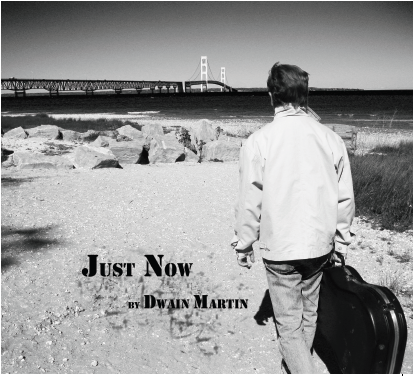
This first one is worth a look in 2011. A folk album to the heart and has a lot of heart to give. Straight from the Northern bit of Michigan (not the Upper Peninsula, that's a bit too North) it recently hit the airwaves. So if your into the local folk vibe you'll dig this. 9. The Forcast - The Forcast

It's true, I'm a huge Dashboard Confessional fan. Yeah. I said it. Most grown men would never admit to anything of such nature but the truth is, I'm not a grown man and we all go though tough emotional times… sometimes melodramatic emo rock is just what you need. Since there wasn't a Dashboard release this year (although I did rock out quite a bit to last years release in the recent months) The Forcast was a pretty solid emo rock album for me. 8. The Scissor Sisters - Night Work

It's a solid dance album. I totally dig it. The Robert Mapplethorpe album cover is a nice touch too. If you're not into dance music then it's best you don't youtube "Fire with Fire."
Never mind...I just did for you...
7. Ryan Adams & The Cardinals IV/V

For those of you who know me you might be shocked that I didn't put Ryan Adams at #1 simply because. I mean, last year I put Ryan Adams at #1 because iTunes had a wrong release date and so I bent my list just to accommodate that. This time though I've cooled off just a bit…not so quick to put it at #1 because Ryan Adam can do no wrong, which he can't. And don't get me wrong I totally dig the album and I love the sound but it honestly hasn't been my go to album. This list is all about the albums I've run to the most. It's not a list of favs. If it was a list of favoriets, Ryan Adams"Love is Hell" would be at #1 or 2 or anything in the top ten, always. So with that said, I don't say… wake up to Ryan Adams. Nor do I tend to put it on when I am editing. Which isn't to say I don't dig it, it's just I've been a bit more selective about when I take my Ryan Adams. I'm sure it's going to resurface with enthusiasm come summer. Anyway, I do dig it. You should listen too. 6. Guster - Easy Wonderful
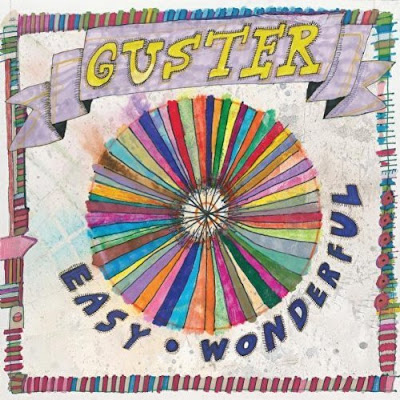
I'm a huge Guster fan. Massive. But I've been on such a huge ambient music vibe lately that I haven't managed to get into much other than "The Sight Below" and "BVDub" which isn't to say I haven't been loving' easy wonderful, it simply hasn't been my go to album in the latter stages of the year. Espcially considering how much I listened to "Lost and Gone Forever." But I suppose when summer rolls around I'm sure "Easy Wonderful" will blare from the car stereo. 5. Hammock - Chasing After Ghosts & Shadows
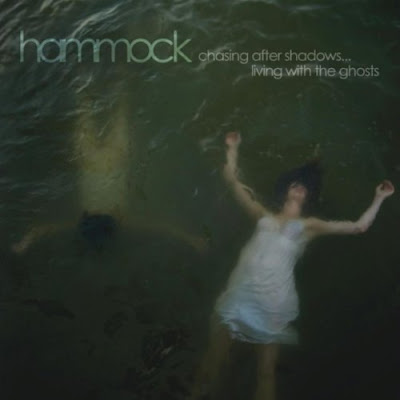
All you need to do is watch this and you'll understand why it's on the list and if you watched "Fire with Fire" you better spend the time to watch this, it's simply beautiful...
Hammock - Breathturn from David Altobelli on Vimeo.
4. Alaska - The Mesozoic Era

While drum and bass is usually a miss, this album is nice. I am fan of lots of variations of techno and trance but drum and bass usually never leaves a lasting impact. This album on the other hand sits just right. I enjoy the subtle blending of spoken word and piano mixed in on several of the tracks. Good stuff. 3. Blaudzun - Seadrift Soundmachine
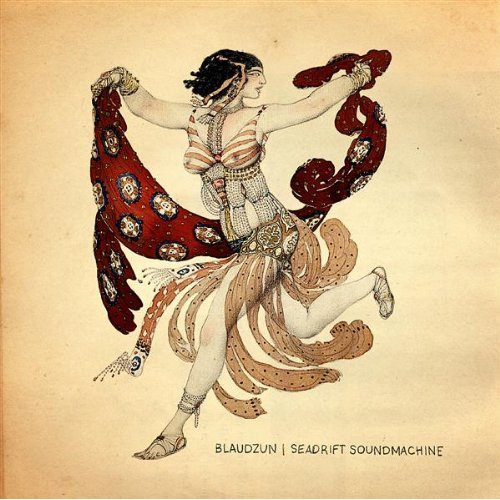
This album is fantastic. Simply a great mix of folk and rock. The sound originates from the mind of Johannes Sigmond and as far as I know, he's only big in Europe. Or at least the Netherlands where he's from. Everyone I mention his name to usually returns the standard, "Who?" Which is sad because his music is worth a listen for sure.
These are nice: 2. Bvdub - The Art of Dying Alone
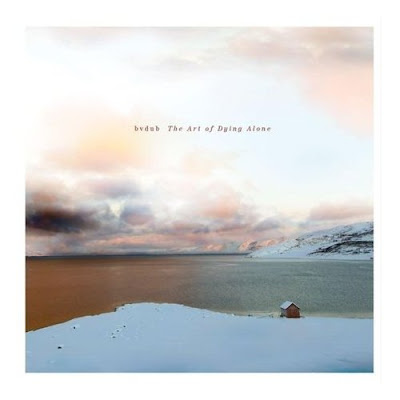
I love the cyclical cycles of this music. A true ambient joy to listen to. But if your not a fan of drone-meets-ambient then you should stay away. Anyone not into that type of mix is probably set to go mad. I on the other hand, I'm weird and totally dig that sort of sound. 1. The Sight Below - It All Falls Apart

I can't get enough of this album. There are two tracks that I really dislike on the album unlike Blaudzun or The Ryan Adams album where everything pretty much sits right . "Burn me out from the Inside" and "New Dawn Fades" really are the least moving compositions on the album (the remain unchecked in iTunes). But I love love love "Through The Gaps In The Land" and "Stagger." Both those tracks are awesome. Anyway, more hardcore ambient music here, so if your looking for something a bit more upbeat then you'd be better off with well... something else. But I dig it and this is my list so everything is as it should.
Fin. There it is everybody! Anybody want to share anything throw it my way too, I hope to bring back Music Fridays in 2011 so here's to that!
Have a Happy New Year's Eve and Have a wonderful start to the New Year!
Be safe out there!
Cheers~
Happy Holidays
These times, all-be-it busy at the desk of IU, can mean many things to many people…and as very brief moments go, I would like to take the briefest of moments to say there are so many things to be thankful for, so many people to hug and wonderful things to be shared. We sadly never get as much time as we would like to do all this…and really it's more to list even if there was enough time…but with that, I'm send out a hug and my best to those close and far around this special times... and while it not be a snowy as one could hope for this time of year it is at least white...
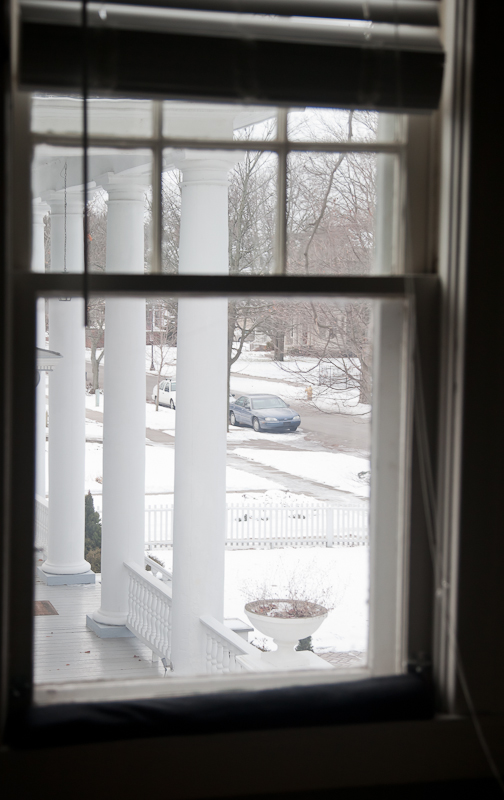
Happy Holidays!
Always more to come...
Cheers.
